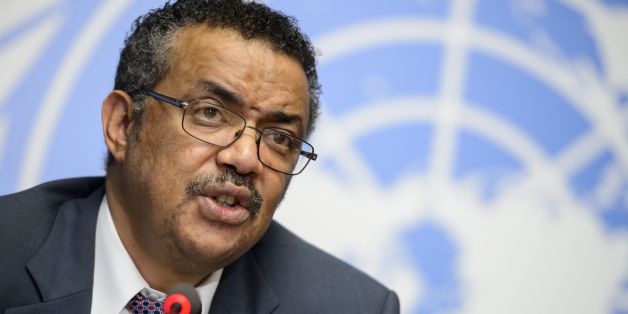The World Health Organisation has launched the Strategy to Achieve Global Covid-19 Vaccination by mid-2022 (the Strategy) to help bring an end to what has become a two-track pandemic: people in poorer countries continue to be at risk while those in richer countries with high vaccination rates enjoy much greater protection.

WHO had set a target to vaccinate 10% of every country, economy and territory by the end of September but by that date 56 countries had not been able to do so, the vast majority of these are countries in Africa and the Middle East.
The new strategy, unveiled on Thursday, October 7, 2021, outlines a plan for achieving WHO’s targets to vaccinate 40% of the population of every country by the end of this year and 70% by mid-2022.
“Science has played its part by delivering powerful, life-saving tools faster than for any outbreak in history,” said WHO Director-General, Dr Tedros Adhanom Ghebreyesus. “But the concentration of those tools in the hands of a few countries and companies has led to a global catastrophe, with the rich protected while the poor remain exposed to a deadly virus. We can still achieve the targets for this year and next, but it will take a level of political commitment, action and cooperation, beyond what we have seen to date.”
“This is a costed, coordinated and credible path out of the COVID-19 pandemic for everyone, everywhere,” said United Nations Secretary-General, Antonio Guterres. “Without a coordinated, equitable approach, a reduction of cases in any one country will not be sustained over time. For everyone’s sake, we must urgently bring all countries to a high level of vaccination coverage.”
To achieve the global vaccination targets, there should be a three-step approach to vaccination, with all older adults, health workers, and high-risk groups of all ages, in every country vaccinated first, followed by the full adult age group in every country and lastly extended vaccination of adolescents.
Vaccinating 70% of the global population requires at least 11 billion vaccine doses. By the end of September, just over 6 billion doses had already been administered worldwide. With global vaccine production now at nearly 1.5 billion doses per month, there is sufficient vaccine from a supply perspective to achieve the global vaccination targets provided that there is equitable distribution of those doses.
Substantial financing has already been invested to procure most of the required vaccine doses for low- and lower-middle-income countries through COVAX, the African Vaccine Acquisition Trust (AVAT) and bilateral contracts. There needs to be additional investment to secure the remaining vaccine doses for these countries as well as investment to support in-country delivery.
The Strategy outlines the priority actions needed from the different actors to achieve the targets.
All countries must:
- Establish updated national COVID-19 vaccine targets and plans defining dose requirements to guide manufacturing investment and vaccine redistribution, and financial and programmatic resource needs to guide internal planning and external support;
- Monitor vaccine demand and uptake carefully to rapidly adapt services and ensure continuity of vaccine supplies;
- Commit to equitable distribution of vaccines in line with the WHO three-step approach;
- Revise national vaccination strategies, policies and prioritisation as needed to harness emerging evidence to maximize the impact of existing, modified and new vaccines.
Countries with high vaccine coverage must:
- Swap vaccine delivery schedules, with COVAX and AVAT to enhance coverage in countries in need;
- Fulfil and accelerate vaccine dose-sharing and donation commitments to COVAX in the near term, for those with existing pledges;
- Establish new dose-sharing commitments to facilitate progress toward the 70% coverage target in every country.
Vaccine-producing countries must:
- Allow the free cross-border flow of finished vaccines and raw materials;
- Enable diversified vaccine production, both geographically and technologically, including through non-exclusive, and transparent licensing and sharing of know-how to allow transfer of technology and scale-up of manufacturing.
COVID-19 vaccine manufacturers must:
- Prioritize and fulfil COVAX and AVAT contracts as a matter of urgency;
- Provide full transparency on the overall monthly production of COVID-19 vaccines and clear monthly schedules for supplies to COVAX, AVAT and low and low-middle income countries, to enable proper global and national-level planning and optimal use of scarce supplies;
- Actively engage and work with countries that have high coverage and that have contracted high volumes of vaccines to allow the prioritisation of COVAX and AVAT contracts, including through delivery schedule swaps, and facilitate rapid and early dose-sharing;
- Commit to share know-how more rapidly, facilitate technology transfer and provide transparent non-exclusive voluntary licenses, to ensure that future vaccine supply is reliable, affordable, available, and deployed to every country in volumes and timing that achieves equitable access.
Civil Society, community organisations, and the private sector must:
- Advocate locally, nationally and internationally for equitable access to COVID-19 vaccines, tests and treatments, calling for and monitoring in particular the specific actions required of manufacturers, governments and multilateral actors;
- Mobilise and empower communities, including through social media and community networks, to generate strong vaccine demand and address misinformation and misperceptions that contribute to vaccine hesitancy;
- Provide support to the in-country delivery of vaccination programmes and services.
Global and regional multilateral development banks and institutions must:
- Enable countries to more rapidly access the capital and external support needed for in-country vaccine delivery, prioritising low-income settings and especially targeting support to the technical, logistics and human resources required;
- Engage fully with COVAX/ACT-Accelerator and AVAT, with integrated operations and real-time sharing of information to truly support equitable access;
- Support international procurement and allocation mechanisms to enable all countries to equitably, efficiently and rapidly achieve the COVID-19 vaccine targets;
- Support vaccine distribution plans and a campaign to convey the life-saving importance of approved COVID-19 vaccinations.
